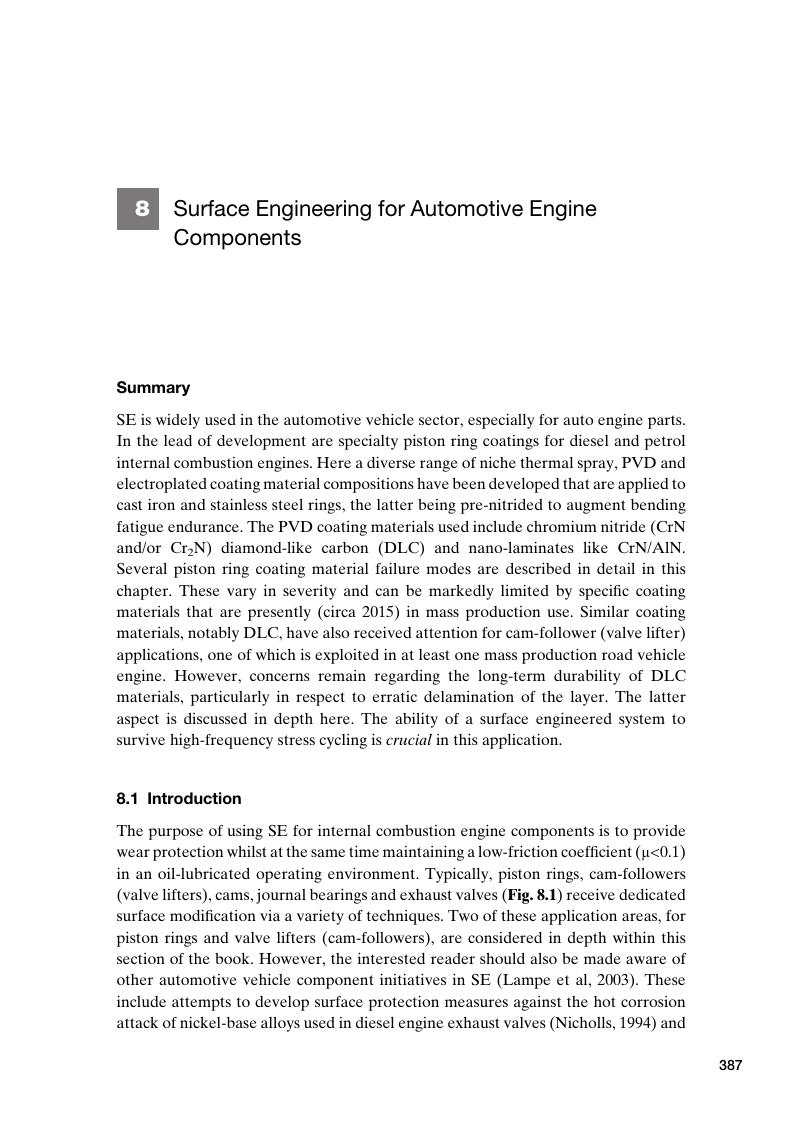Book contents
- Introduction to Surface Engineering
- Introduction to Surface Engineering
- Copyright page
- Dedication
- Dedication
- Contents
- Preface
- 1 Background to the Subject
- 2 Surface Engineering Basics
- 3 Surface Engineering with Diffusion Technologies
- 4 Surface Engineering with Deposition Technologies
- 5 Surface Engineering by Other Means
- 6 Surface Degradation and Its Evaluation
- 7 Surface Engineering for Cutting Tools
- 8 Surface Engineering for Automotive Engine Components
- 9 Surface Engineering for Gas Turbine Engines (GTEs)
- 10 Surface Engineering for Bio-Medical Implants
- Appendix A – Phase Diagrams
- Index
- Nomenclature
- References
8 - Surface Engineering for Automotive Engine Components
Published online by Cambridge University Press: 20 January 2017
- Introduction to Surface Engineering
- Introduction to Surface Engineering
- Copyright page
- Dedication
- Dedication
- Contents
- Preface
- 1 Background to the Subject
- 2 Surface Engineering Basics
- 3 Surface Engineering with Diffusion Technologies
- 4 Surface Engineering with Deposition Technologies
- 5 Surface Engineering by Other Means
- 6 Surface Degradation and Its Evaluation
- 7 Surface Engineering for Cutting Tools
- 8 Surface Engineering for Automotive Engine Components
- 9 Surface Engineering for Gas Turbine Engines (GTEs)
- 10 Surface Engineering for Bio-Medical Implants
- Appendix A – Phase Diagrams
- Index
- Nomenclature
- References
Summary

- Type
- Chapter
- Information
- Introduction to Surface Engineering , pp. 387 - 422Publisher: Cambridge University PressPrint publication year: 2017



